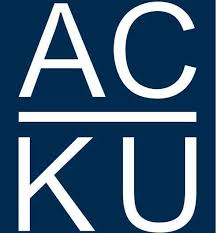Heritage and sustainability in the Islamic built environment / edited by Bashir A. Kazimee.
Material type: TextLanguage: English Publication details: Southampton, Boston : Wit Press, ©2012.Description: xv, 213 pages : color illustrations, maps ; 24 cmISBN:
TextLanguage: English Publication details: Southampton, Boston : Wit Press, ©2012.Description: xv, 213 pages : color illustrations, maps ; 24 cmISBN: - 9781845646240
- 184564624X
- Sustainable architecture -- Islamic countries
- Sustainable development -- Islamic countries
- Human engineering
- Buildings -- Environmental engineering
- Urban ecology (Sociology)
- Islam and architecture
- Human ecology -- Islamic countries
- Place (Philosophy) in architecture -- Islamic countries
- Islamic cities and towns
- Landscape architecture -- History
- Globalization -- Political aspects -- Islamic countries
- Globalization -- Economic aspects -- Islamic countries
- NA2543. I74.
| Item type | Current library | Call number | Status | Date due | Barcode | Item holds | |
|---|---|---|---|---|---|---|---|
 Monograph
Monograph
|
Afghanistan Centre at Kabul University | NA2543.I74.H47 2012 (Browse shelf(Opens below)) | Available | 3ACKU000378009 |
Includes bibliographical references.
Contents: Preface—Acknowledgment—1. Place and meaning in urban Isfahan—2. Urban recovery : the case of historic Kabul—3. Human scale and sustainability in the Ottoman mosque and külliye—4. Tradition and continuity in the built environment : towards a housing model for Kandahar, Afghanistan—5. Historic context strategy with implications to Islamic heritage environment—6. The traditional Malay Melaka house of Malaysia : the architectural and cultural heritage—7. Sustainable development and eco-tourism at Bamyan, Afghanistan—8. Spatial heritage of sustainable urbanism in Yazd, Iran—9. Iran built environment: a sustainable sample of Islamic cities—10. Catching up with The Kite Runner: architectural authenticity in a world overrun by globalization—11. Sustainable strategies for preservation of Moslem built environment with focus on arid regions—Index.
Summary: “The essays in this book represent an up to date research and investigation into the various aspects of heritage and sustainability in the Islamic Built environments with an analysis of the problems that these cities face, as they confront the forces of globalization and new development. The authors in the book aim to the need for knowledge and understanding of Islamic society which is crucial for comprehending their rich architectural heritage and urban form with their intended meanings and uses. The book embraces a wide array of principles, strategies and precedents that are instrumental to the design of cities and communities in Islamic regions in order to sustain their cultural and environmental vitality. The subject matter in this book will provide an important body of knowledge, not only to the design professionals and students of architecture and planning, but also includes useful information across disciplines, such as social sciences, planning, urban geography and more”—back cover.
English
